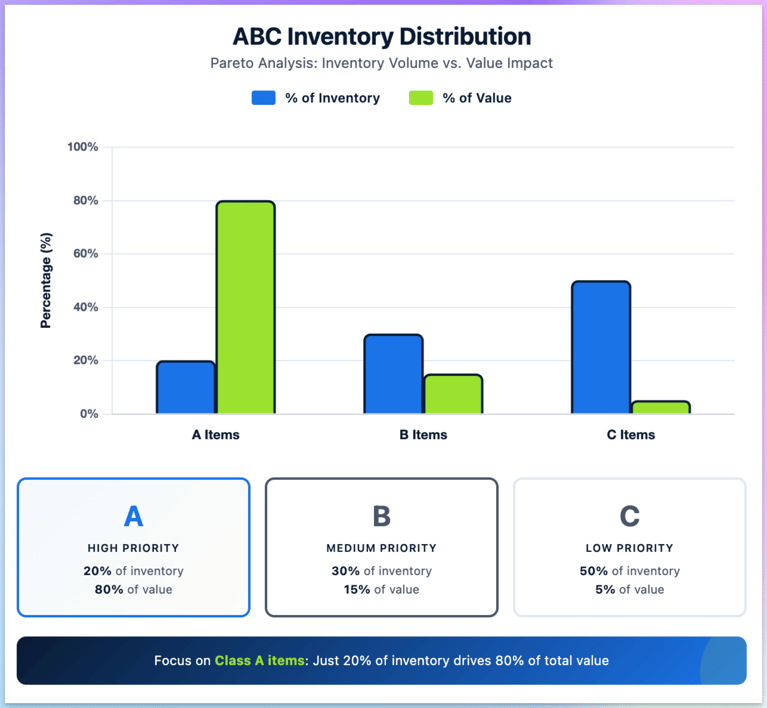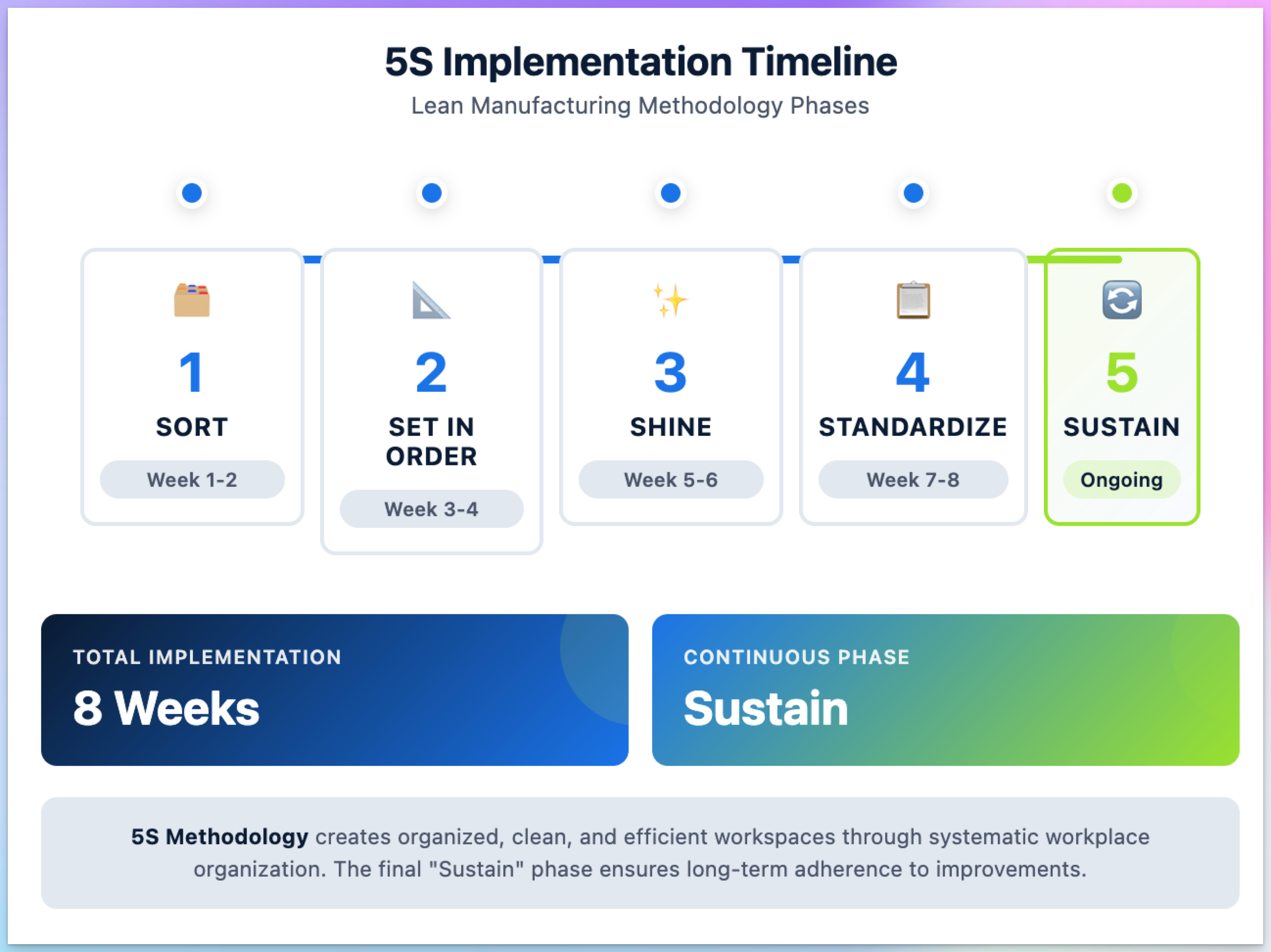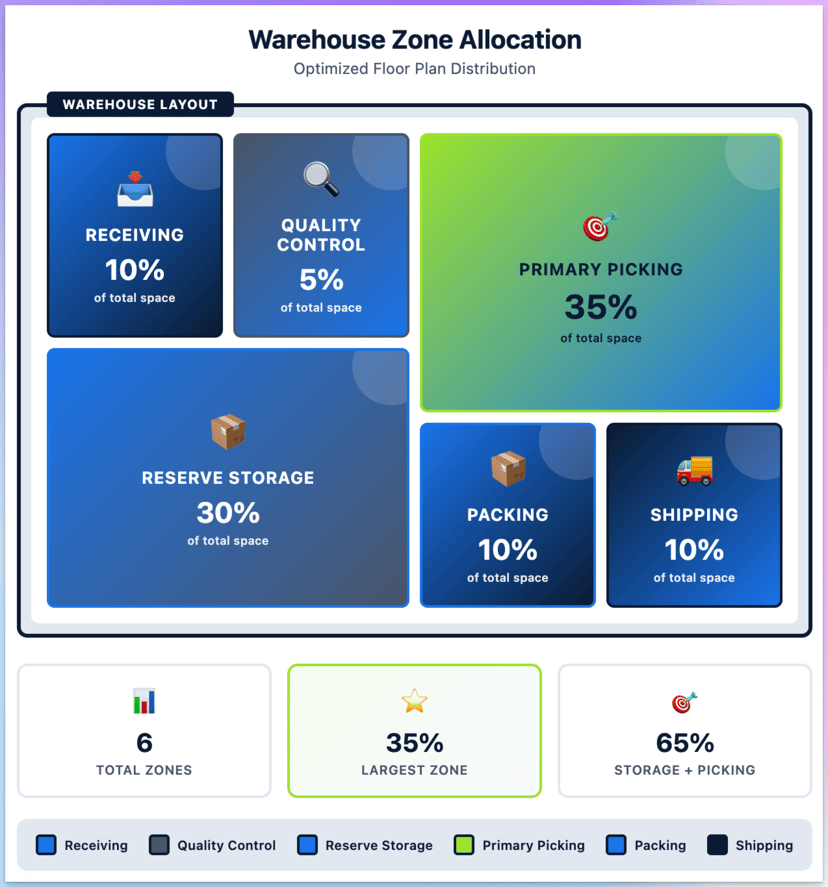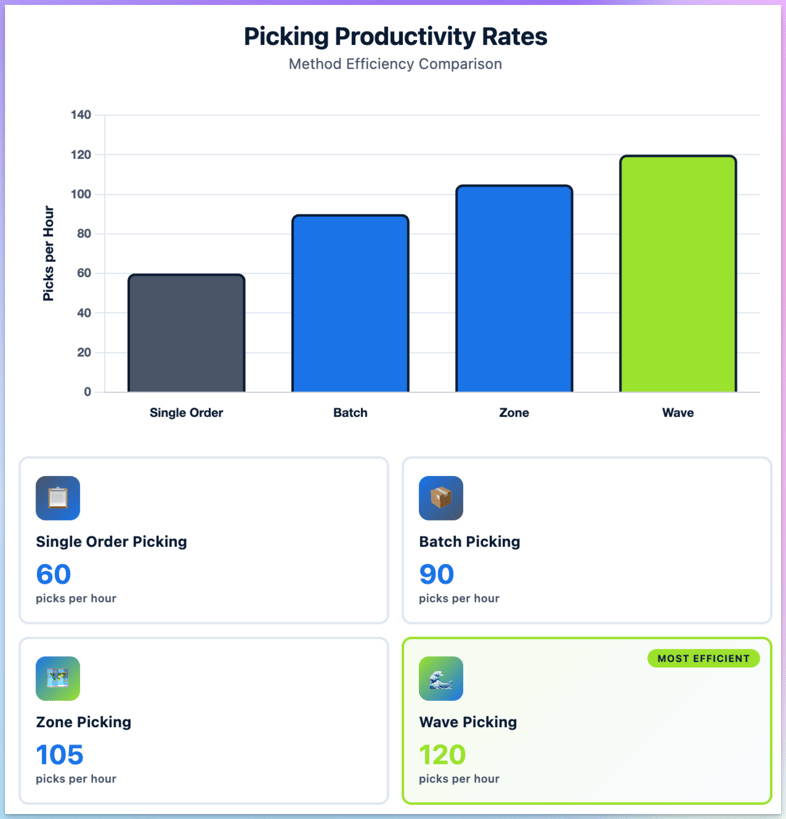9 min read
9 Ways to Improve Your Warehouse Pick Rate [Guide for 2026]
Slow picking rates drain warehouse profitability by increasing labor costs, delaying shipments, and leading to dissatisfied customers. Every minute...

Disorganized warehouses cost businesses thousands in lost productivity, picking errors, and safety incidents. Poor layout design forces workers to travel unnecessary distances, while inefficient storage methods leave valuable cubic space unused.
Studies show that warehouse workers spend up to 50% of their time walking and searching for products rather than fulfilling orders.
The solution lies in implementing strategic organization principles that optimize space, streamline workflows, and reduce operational costs. These 21 warehouse organization ideas transform chaotic facilities into productivity engines.
20 Years of Kitting Excellence
Ready to Streamline Your Supply Chain?
Join industry leaders achieving 99%+ SLA performance with flexible kitting.
Fulfillment, and 3PL solutions. We handle over 100 million kits annually
ABC analysis categorizes inventory based on value and turnover rate, placing high-priority items in the most accessible locations. This method follows the Pareto principle: typically, 20% of your products generate 80% of your revenue.
Here’s how to implement it:
This reduces pickers' travel time by prioritizing the most frequently accessed items. Proper slotting optimization can reduce picking labor costs by 15-30%.

Zone picking divides the warehouse into specific areas, with dedicated pickers assigned to each zone. This eliminates congestion and significantly reduces picker travel distance.
Zone picking offers several practical benefits:
Combine zone picking with a conveyor system or handoff points to move orders between zones. This works particularly well for warehouses processing 100+ orders daily with diverse product ranges.
Most warehouses underutilize vertical space, leaving valuable cubic footage empty. High-bay storage systems with narrow aisles and vertical lift modules can increase storage capacity by 40-60% without expanding the building footprint.
Using high-bay storage allows you to significantly increase capacity without expanding the building footprint:
Vertical lift modules can save up to 85% of floor space compared to traditional shelving. Ensure your facility's floor load capacity, ceiling height, and fire suppression systems can accommodate taller racking before implementation.
Poor traffic management causes bottlenecks, accidents, and inefficiency. Designate one-way aisles and separate pedestrian walkways from forklift zones to maintain smooth operations.
Implementing clear traffic flow strategies helps maintain smooth and safe warehouse operations:
A National Institute for Occupational Safety and Health (NIOSH) report indicates that proper traffic management significantly reduces workplace injuries involving powered industrial vehicles.
The 5S system—Sort, Set in Order, Shine, Standardize, Sustain—creates a foundation for warehouse organization and continuous improvement.
Applying each step systematically ensures efficiency, safety, and consistency throughout the facility:
Conduct monthly 5S audits with visual checklists to ensure compliance. This Japanese manufacturing principle reduces inventory waste , improves safety, and enhances overall productivity.

Inconsistent or missing labels create confusion, slow picking times, and increase errors. Implement a comprehensive labeling system that anyone can understand immediately.
Labeling best practices:
Replace damaged or faded labels immediately to prevent picking errors. Consider illuminated signs for low-light areas to support 24/7 operations.
The way you store pallets directly impacts space utilization and accessibility. Choose racking configurations based on your inventory characteristics and throughput requirements.
Here are some standard pallet racking types:
Calculate your inventory-to-throughput ratio before selecting a system. High-density storage sacrifices accessibility, so balance based on your specific needs.
Designated staging zones separate incoming, outgoing, and work-in-progress inventory to prevent mixing and confusion.
Key staging areas:
Mark each staging area with floor tape and clear signage. Size staging zones based on peak volume periods, not average throughput.
Cross-docking eliminates storage time by transferring products directly from receiving to shipping. This works particularly well for pre-sorted items, perishables, or time-sensitive orders.
Products spend less than 24 hours in the facility, reducing handling costs and speeding delivery times. According to research published by the Material Handling Institute, effective cross-docking can reduce handling costs by 30-50% for qualifying products.
Cross-docking requirements:
Not all products suit cross-docking. Reserve this approach for items with predictable demand and reliable supplier partnerships.
Random putaway might seem flexible, but it creates inefficiency and lost inventory. Establish clear rules for where items belong based on product characteristics.
Putaway guidelines:

Document your putaway logic in your warehouse management system so all team members follow consistent rules.
Fixed shelving wastes aisle space that could otherwise be used to store inventory. Mobile shelving systems mount on tracks, allowing you to compress sections and create aisles only where needed.
This approach can increase storage capacity by 50-100% compared to traditional static shelving. Mobile shelving works best for slow-moving small parts, archives, and items accessed infrequently.
Mobile shelving considerations:
Returns and damaged inventory clog valuable space when not processed promptly. Create a separate quarantine area with clear workflows for disposition decisions.
Return processing workflow:
Delayed return processing leads to inventory inaccuracies and ties up working capital in unusable stock.
FIFO inventory rotation prevents spoilage, expiration, and obsolescence by ensuring older stock ships before newer arrivals. This principle applies beyond food products to any item with an expiration date or shelf-life concerns.
FIFO implementation methods:
For industries like pharmaceuticals, cosmetics, or chemicals, FIFO isn't optional—it's a regulatory requirement.
Misplaced tools and equipment waste valuable time and create safety hazards. Create shadow boards, tool cribs, and designated parking areas for all warehouse equipment.
Equipment organization strategies:
When everyone knows where equipment belongs, you eliminate time wasted searching and reduce equipment damage.
Order batching groups multiple orders with common items for simultaneous picking, dramatically reducing travel time and increasing picks per hour.
Batching strategies:
A study by the International Journal of Production Economics found that proper order batching can improve picking productivity by 30-50% compared to single-order picking.

Poor lighting causes picking errors, slows operations, and increases accident risk. Warehouse lighting should provide uniform coverage of 30-50 foot-candles in storage areas and 50-100 foot-candles in picking and packing zones.
Lighting improvements:
According to the U.S. Department of Energy, LED lighting can reduce energy costs by 50-75% while improving visibility and reducing maintenance.
Products requiring specific environmental conditions need dedicated zones with monitoring systems. This prevents damage, maintains quality, and ensures regulatory compliance.
Temperature zone management:
For facilities handling food, pharmaceuticals, or electronics, proper environmental controls protect product integrity and prevent costly losses.
Scattered packing supplies and workstations reduce efficiency and make quality control difficult. Establish centralized packing areas with all necessary materials within arm's reach.
Packing station essentials:
Position packing stations between picking areas and shipping docks to minimize product travel distance. Configure stations in a line or U-shape to enable supervisor oversight.
Annual physical inventories disrupt operations and still miss accuracy issues throughout the year. Cycle counting involves continuously auditing small portions of inventory, maintaining accuracy without shutting down.
Cycle counting best practices:
Warehouses with mature cycle counting programs typically achieve 95%+ inventory accuracy without annual shutdowns.
Visual management displays make performance metrics, safety information, and operational goals visible to all team members. This transparency drives accountability and continuous improvement.
Effective visual boards display:
Position boards in break areas or shift huddle locations where teams gather regularly. Update information daily to maintain relevance and engagement.
Warehouse organization isn't a one-time project—it requires ongoing evaluation and refinement. Create formal processes for identifying problems and testing solutions.
Continuous improvement framework:
Involve frontline workers in improvement initiatives. They interact with processes daily and often have the best insights into practical solutions.
Get ideas on how to delight your customers with delivery on their timeline.
![9 Ways to Improve Your Warehouse Pick Rate [Guide for 2026]](https://www.getproductiv.com/hubfs/AI-Generated%20Media/Images/generate%20a%20image%20on%203PL%20industry%20representing%20a%20blog%209%20Ways%20to%20Improve%20Your%20Warehouse%20Pick%20Rate-1.png)
9 min read
Slow picking rates drain warehouse profitability by increasing labor costs, delaying shipments, and leading to dissatisfied customers. Every minute...

8 min read
Manual warehouse operations create bottlenecks that slow your fulfillment and increase costs. Human error, labor shortages, and inefficient...
![What is a 3PL Warehouse Management System? [Guide for 2026]](https://www.getproductiv.com/hubfs/GetProductiv_October2024/images/warehouse%203pl.jpg)
7 min read
Third-party logistics providers face mounting pressure to manage multiple clients, complex inventories, and demanding service level agreements...